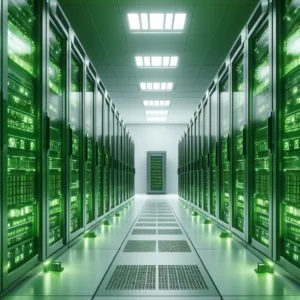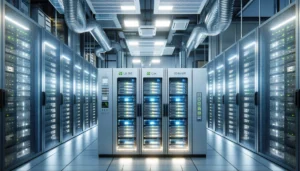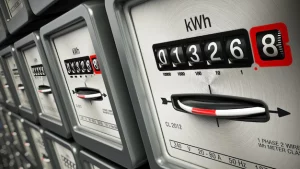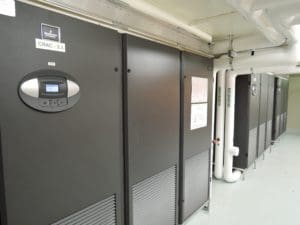Maximising data center energy efficiency is not just an operational necessity; it’s a strategic advantage that can significantly reduce your overheads and enhance performance. At EziBlank, we understand the pressing need for cost-effective solutions that align with your sustainability goals. Our innovative air-flow management systems, specifically our high-quality blanking panels, are expertly designed to optimise your existing infrastructure, minimise energy waste, and promote a more efficient working environment. Transitioning to EziBlank means embracing cutting-edge technology that helps you stay ahead in a competitive landscape while making a positive impact on the planet. Don’t let inefficiency drain your resources—discover how we can elevate your data centre today.
The Role of Blanking Panels in Energy Efficiency
Blanking panels may seem like a minor component within data centres, but their role in enhancing energy efficiency is substantial. By effectively sealing unused spaces in server racks, these panels prevent the mixing of hot and cold air, allowing cooling systems to operate more efficiently. This targeted airflow management reduces the overall energy consumption required to maintain optimal temperatures, leading to significant cost savings and a lower carbon footprint. Incorporating blanking panels into data centre infrastructure is a simple yet powerful step towards achieving greater energy efficiency and sustainability.
Read More
How Do I Reduce Data Center Operating Costs?
Reducing operating costs in data centres is a key priority for businesses seeking to maximise efficiency while maintaining high performance. One of the most effective strategies involves optimising cooling systems, as cooling typically accounts for a significant portion of energy expenses. Implementing solutions like blanking panels to manage airflow and prevent hot air recirculation can drastically reduce the energy needed for cooling. Additionally, adopting energy-efficient hardware and monitoring systems to track and adjust power usage can further drive down costs. By focusing on these areas, data centres can achieve substantial cost savings while maintaining optimal operational standards.
Read More
The Importance of Energy Efficiency in Data Centres
Energy efficiency is a crucial factor in the operation of data centres, as these facilities consume vast amounts of power to keep servers running and maintain optimal cooling conditions. Improving energy efficiency not only reduces operational costs but also lessens the environmental impact of data centres, aligning with global sustainability goals. Strategies such as implementing advanced cooling systems, utilising renewable energy sources, and optimising airflow management with tools like blanking panels are key to achieving higher energy efficiency. By focusing on these areas, data centres can enhance performance while contributing to a more sustainable future.
Read More
Is a green data center good for business?
A green data centre is not only beneficial for the environment but also offers significant advantages for businesses. By focusing on energy efficiency, renewable energy sources, and sustainable practices, green data centres help reduce operational costs through lower energy consumption and improved efficiency. This reduction in costs can translate into higher profitability over time. Additionally, operating a green data centre enhances a company’s reputation by demonstrating a commitment to sustainability, which can attract environmentally conscious customers and partners. Moreover, as regulations around carbon emissions tighten, having a green data centre can ensure compliance and reduce the risk of penalties. Overall, investing in a green data centre is a smart business decision that aligns economic performance with environmental responsibility.
Read More
Data Center Energy Efficiency Measures
Improving energy efficiency in data centres is essential for reducing operational costs and minimising environmental impact. Several key measures can be implemented to enhance efficiency, starting with optimising airflow management through the use of blanking panels, which prevent the recirculation of hot air and ensure that cool air is directed precisely where it’s needed. Upgrading to energy-efficient hardware, such as servers and storage devices with lower power consumption, is another important step. Additionally, adopting advanced cooling techniques, such as liquid cooling or free cooling, can significantly reduce the energy required to maintain optimal temperatures. Monitoring tools that track power usage effectiveness (PUE) allow for real-time adjustments to improve efficiency further. These measures not only lower energy consumption and costs but also contribute to a more sustainable and resilient data centre operation.
Read More
Higher efficiency is the new energy standard for data centre
Higher efficiency has become the new energy standard for data centres as organisations increasingly prioritise sustainability and cost-effectiveness in their operations. Achieving this standard involves adopting advanced technologies and best practices that significantly reduce energy consumption without compromising performance. Key strategies include optimising airflow management with solutions like blanking panels and hot/cold aisle containment, which prevent the mixing of hot and cold air, thereby improving cooling efficiency. Upgrading to energy-efficient hardware and implementing advanced cooling techniques, such as liquid cooling, also contribute to reducing power usage. Additionally, real-time monitoring of energy metrics, such as Power Usage Effectiveness (PUE), allows data centre managers to make informed decisions and continually refine their operations. Embracing these practices not only helps data centres lower their operational costs but also aligns them with global sustainability goals, making higher efficiency the new benchmark in the industry.
Read More
